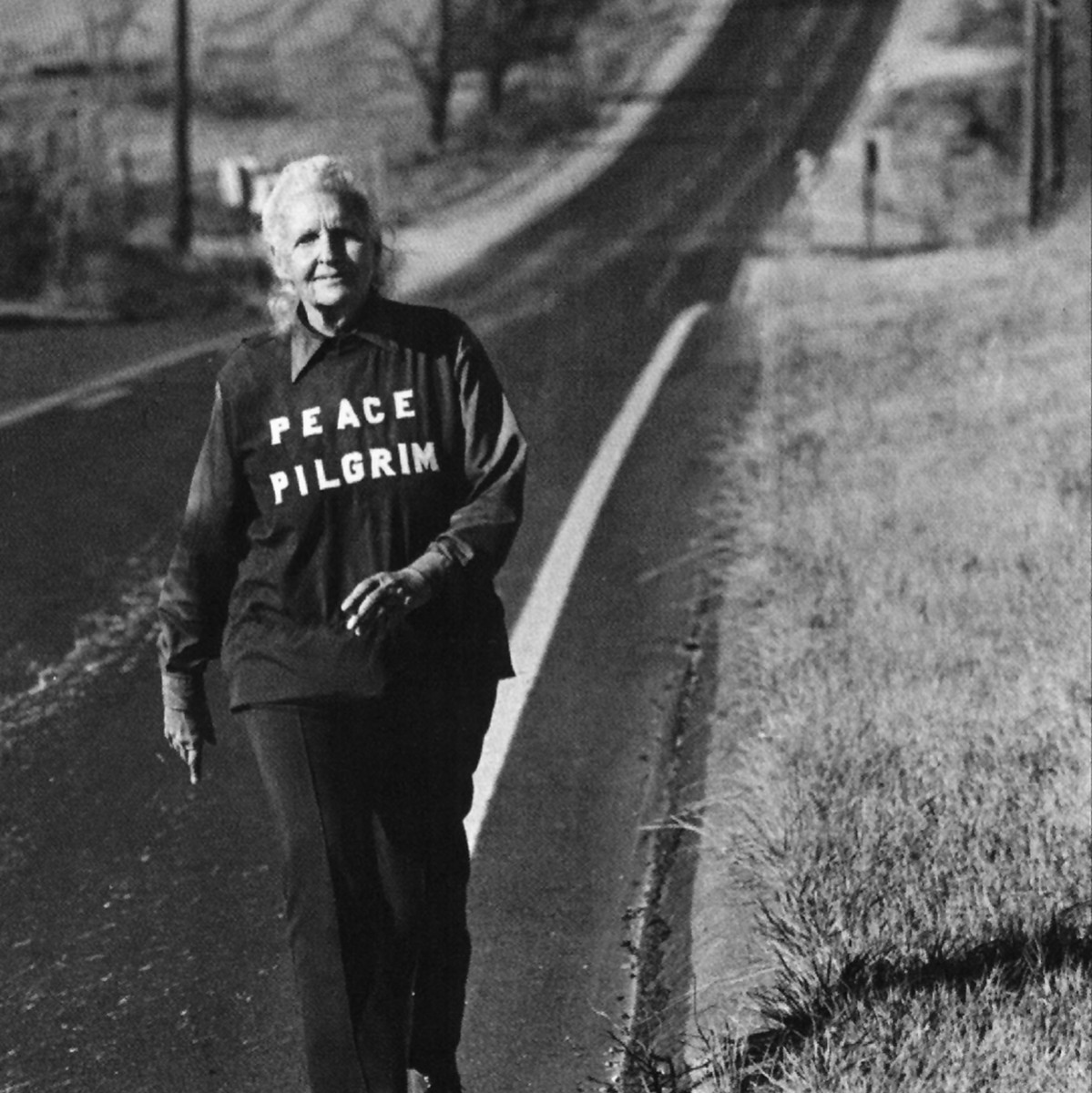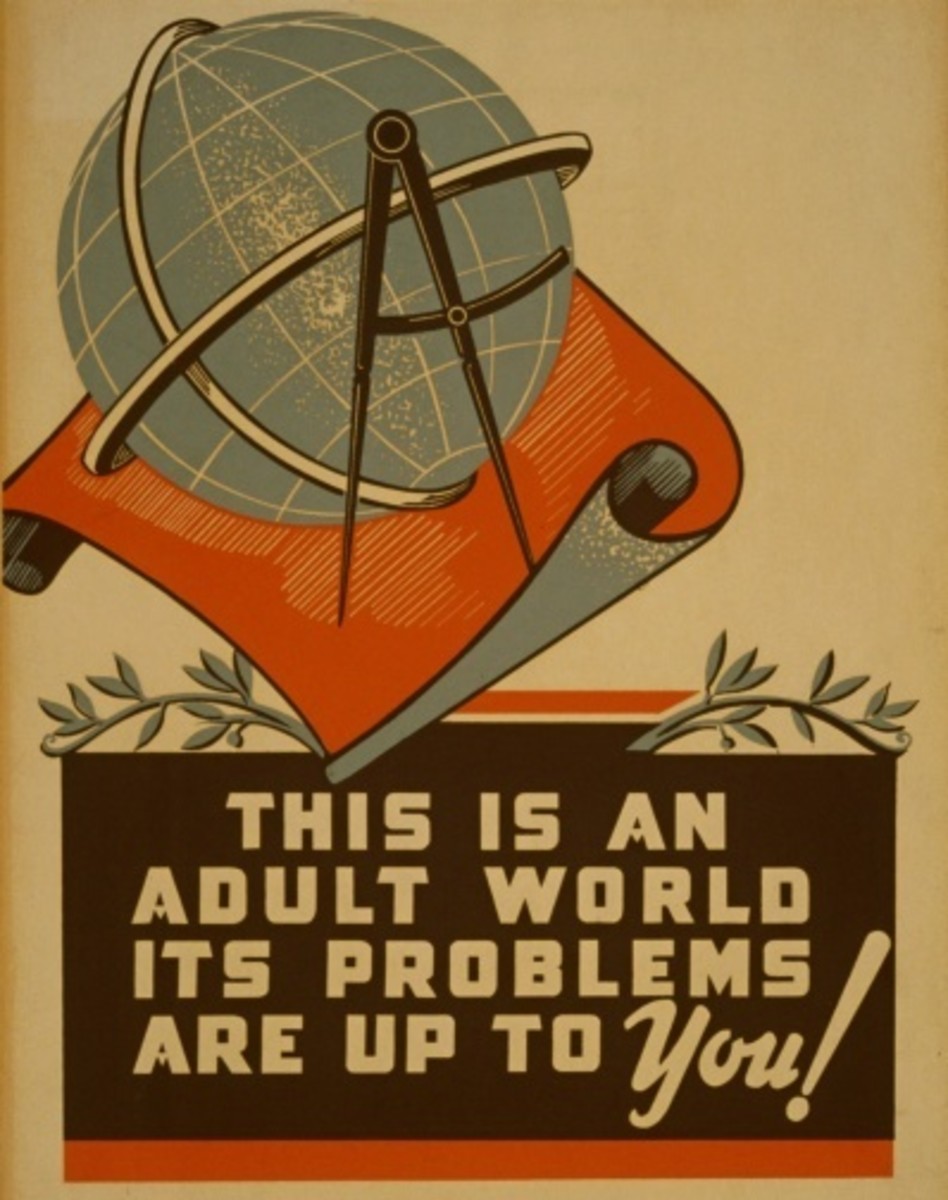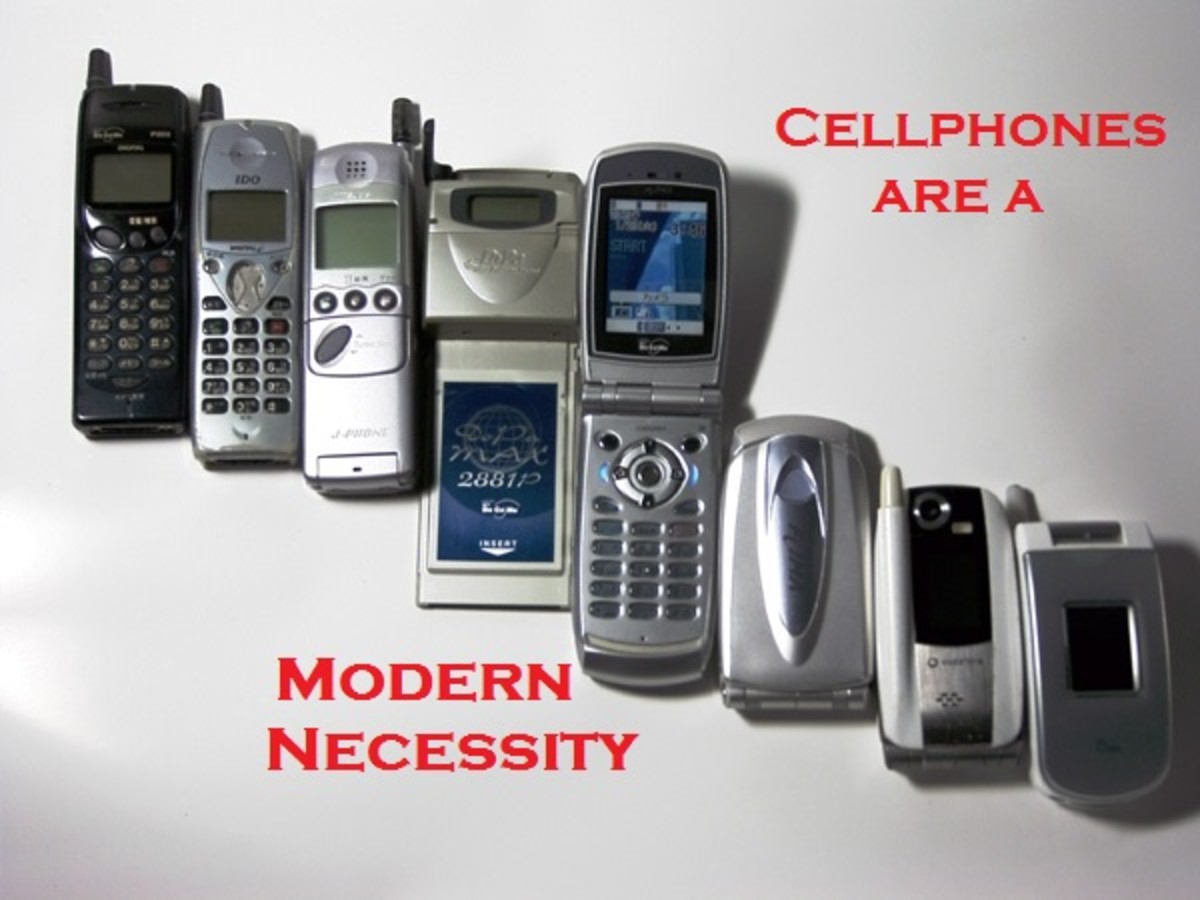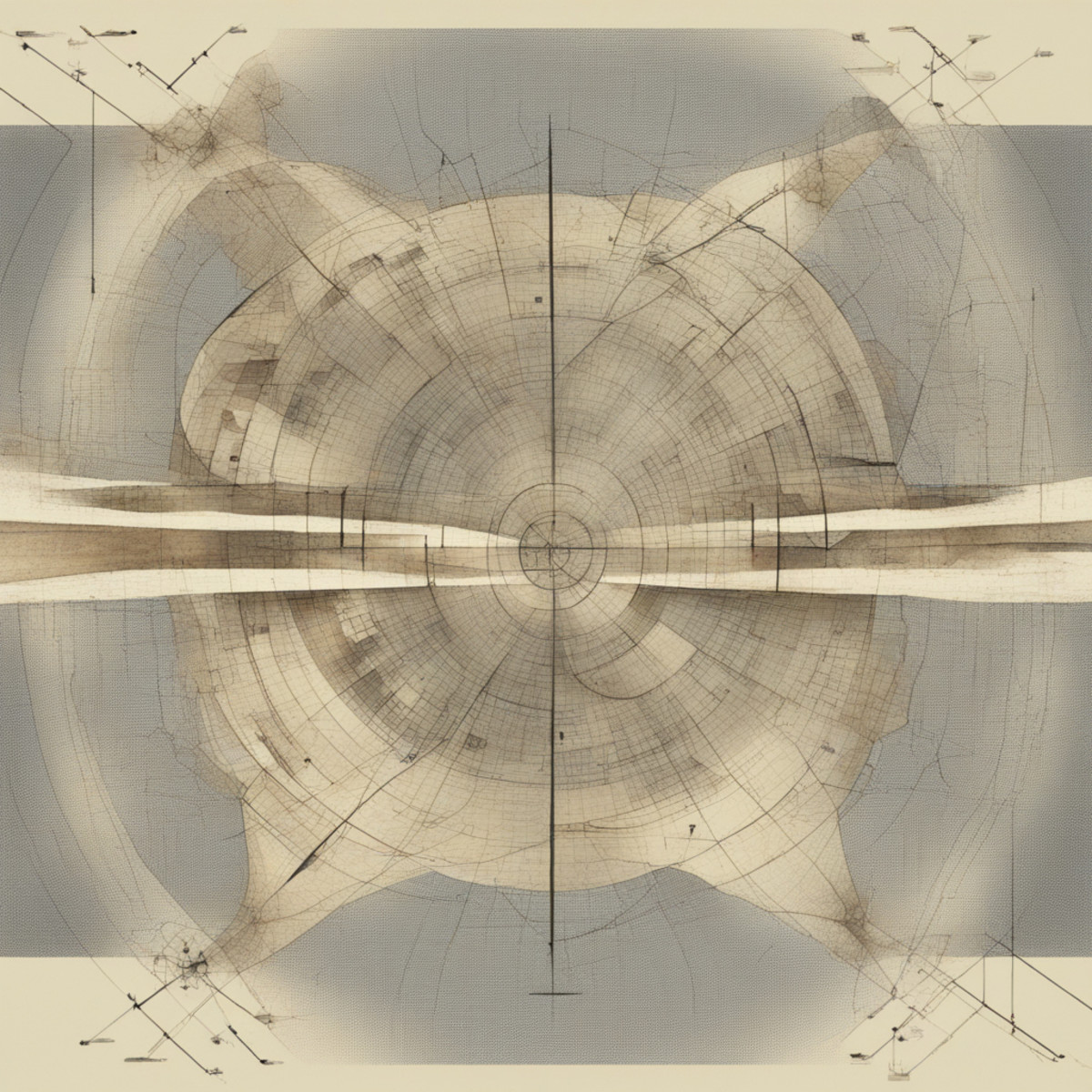Elise Boulding: A Passion for Peace
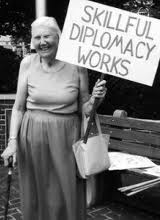
Teaching Peace to the World
Introduction
When I became interested in the subject of sociology, I knew that I was a pacifist. Therefore, I truly I enjoy teaching classes in peace and conflict resolution. The work of Elise Boulding has been one of my greatest influences and a women with a life worthy of reading in print.
The pacifist beliefs of Elise Boulding are a breath of fresh air in comparison to the agnostic views of modern social scientists and philosophers like Marx, Durkheim, and Weber. The fathers of social thought often looked for social equilibrium though eyes of mechanistic revolution and class struggles, but Boulding believed that a love for humanity, a mutual respect for others, and a commitment to nonviolence are the first steps toward a culture of peace and social justice.
The following article will look at the life of Elise Boulding from her humble beginning as a Norwegian immigrant and trace her academic career as a gifted sociologist and Quaker activist. The purpose of this article is not to tell the story of Elise Boulding, but to reveal the reasons why Boulding’s school of social thought stands apart from the theories of her male counterparts by focusing on Boulding’s dedication to activism and education.The article will conclude with a brief look at Boulding’s legacy in the fields of peace education and conflict resolution.
The Life of Elise Boulding
Elise Boulding was born in 1920 inOslo,Norway. Boulding’s ancestors were seafarers and shipbuilders until clipper ships were replaced by steam powered boats. Elise’s mother, Birgit, never let her daughter forget the importance of her heritage after the family immigrated toAmericawhen Elise was three. According to Boulding biographer Mary Lee Morrison, “Elise Boulding’s immigrant status profoundly affected her life views. Her sense of being both a part of a culture and standing away from it developed as a result of living equally in both the Norwegian and American worlds” (Morrison, 22).
Young Elise, at Birgit’s behest, repeated her lessons in English and in Norwegian. This practiced helped Elise to keep the Norwegian culture alive. In some of Boulding’s later reflections on her relationship with Birgit, Elise says, “I grew up seeing the world through my mother’s eyes” (22). Birgit never fully adjusted to life inAmerica. Instead, Birgit instilled her love ofNorwayinto her young daughter and reminded Elise thatNorwaywas superior toAmericaand that Americans were far too materialistic. Elise grew up to viewNorwayas a secure haven and planned to return toNorwayto continue her studies. However, Boulding’s “safe place” disappeared when the Nazis invadedNorwayduring Elise’s last year in college. Morrison states, “This was a time of profound personal crisis for her [Boulding] and an epiphany that was to determine the course of the rest of her life” (22).
Birgit influenced her young daughter in many ways. Her greatest fear was that Elise would become too “American.” She insisted that her daughter walk to meet friends and prohibited the use of the telephone citing that it promoted laziness. Birgit was also a working mother, a masseuse with a solid clientele. Birgit’s job helped the family to live well during the lean times of the Great Depression. Birgit died of ALS at age 52 when Elise was 25. During Birgit’s last years, Elise assumed the role of her primary caregiver. In later years, Boulding reflected on Birgit’s influence on the family. According to Elise, “Mother communicated the centrality of the family to the whole of one’s life in many ways, both through her working and her home-centered years, and we three girls have all been blessed by that. It has helped each of us to strive for, and to a significant extent achieve, a sense of wholeness in the family life we have fostered in our own households” (Morrison, 32).
Devout Quaker and Dedicated Wife
Elise Boulding began her spiritual journey during her early childhood. According to Morrison, “Beginning as a child, Elise felt the presence of God, and this sense of listening for the Spirit has remained with her ever since” (33). After graduating fromDouglasCollege, Elise moved toNew York City, but returned to her childhood home ofSyracuseafter she realized that she could not cope with city life. During her five-month stay in the city, Boulding formed a friendship with Catherine de Hueck, a Russian émigré who gave up her upper-class roots to work with the poor. Morrison states, “It was through her [de Hueck] that Elise discovered that people could love God unashamedly and profess this love through acts of charity in loving kindness” (38). It was also during this time inNew Yorkthat Boulding joined the socialist movement and gravitated toward the central ideas of pacifism.
As Elise became more involved with the pacifist community, she found herself drawn to Quakerism which Elise discovered during her stay atDouglasCollege. “The purpose of Quaker worship” states Morrison “is to discover, through silent, expectant waiting, that truth which is universal and which can guide individuals into the right relationship both with God and with the world” (39). Through Quakerism, Elise could listen to God, an activity that Elise had enjoyed since childhood. It was also through Quakerism that Elise met her future husband, Kenneth Boulding, a renowned economist. Elise and Kenneth were dedicated to the core pacifist beliefs of the Quakers. The couple would often speak side-by-side at Quaker meetings, and Elise dedicated herself to teaching Quaker Sunday School, a task that she has continued up into her latter years. According to Morrison, “For Elise, her marriage and her entrance into the Society of Friends both occurring at the same time in 1941, were two experiences that were to transform her and ground all of her future work” (42). It was at this time that Elise was struggling with loss of her concept of a “safe place.” Elise rationalized that ifNorwaywas not safe, then perhaps a safe place did not exist. Therefore, it was up to Elise to make the world a better place. The act of meeting Kenneth and finding Quakerism only helped to solidify the determinism that Elise possessed.
It was during the early years of her marriage that Elise met eminent sociologist, Alva Myrdal, and her husband, Gunner. According to Morrison, “Alva became, at that time, a strong role model for Elise, as she worked and advocated for peace and showed Elise the importance of integrating her life as a wife, mother, potential scholar, and international traveler” (49). It was under Myrdal’s influence that Boulding began to take an active role in networking and the important link between grass-roots involvement and global civic culture. Elise was a quick study and found herself engaged in many of the political battles of that time.
The Bouldings took an active stance against American involvement in World War II after the attacks on Pearl Harbor. At this time, Kenneth was involved with the League of Nationswho tried to censor Boulding’s statements on public issues. Kenneth eventually left the League because of the censorship and accepted a position as FiskUniversityin Nashville, Tennessee. At Fisk, Elsie met Robert Park and other members of the University’s sociology faculty. This exposure combined with her relationship with Alva Myrdal fueled Elise’s desire to pursue her master’s degree in sociology which she completed in 1949 at IowaStateUniversity. Boulding’s thesis was based on the effects of wartime separation on the Iowafarming community. Her advisor, Rueben Hill, incorporated Boulding’s work in his book entitled Families Under Stress. Her work was later published in 1950 in the Annals of the American Academy of Political and Social Science. Elise Boulding’s career as a sociologist had begun.
Peace and Education
It would be fifteen years before Elise Boulding would begin work on her doctorate in sociology; however, Elise dedicated these years between academic pursuits to the growth and development of the five Boulding children. Elise firmly believed that her children were her institution of learning during these years away from formal education and continued to work on “the work of the family in the grounding of all other peacemaking functions” (Morrison, 53). Morrison states that “During Elise’s early parenting days the question that was always in the back of her mind was, ‘Will this help the children to grow up to be peacemakers… [Will] our children choose the nonviolent path in their own lives?’” (55). With this concept in mind, Elise began to lay the foundation for one of her major contributions to the field of sociology entitled Building a Global Civic Culture. Boulding also reflected on these years in her work One Small Plot of Heaven: Reflections on Family Life by a Quaker Sociologist which was published in 1989.
In addition to her contributions to Quakerism and Sociology, Elise Boulding is probably best known for her association with the Women’s International League for Peace and Freedom. In her later career, Boulding would be elected International Chair of WILPF. Morrison states, “This work took her all over the world and helped to solidify and ground her academic writing and speaking on women” (Morrison, 66). Morrison also states that the association “helped foster connections to many, if not most of the subsequent organizations in which she became involved during the decades of the ‘50s and ‘60s” (66).
The Women’s International League for Peace and Freedom was an offshoot of the International Congress of Women founded for the purpose of ending World War I. Since its beginnings, WILPF has been dedicated to worldwide peace. During this time, the Bouldings moved toCalifornia. While inCalifornia, Elise and Kenneth were instrumental in the foundation of the Center for Research on Conflict Resolution. Elise performed most of the clerical duties for the CRCR. From her clerical duties, Elise began a grass roots newsletter on peace research. The early forms of the newsletter consisted of articles that Boulding had retrieved from the wastebasket and pieced together to form a pamphlet. This crude newsletter was an early form of the International Peace Research newsletter which became one of the more profound forms of communication relating to the peace movement.
The 1960s were the years that would truly shape the future of Elise Boulding. Elise was still an active member of the WILPF and the Quaker religion, but she still labeled herself as a housewife. Elise was chosen to work on an educational project with the Childhood Education Committee; however, the project which hoped to facilitate a joint international educational movement never reached fruition. In 1962, Elise helped to organize the Women’s Strike for Peace, a movement involving white, middle-an upper-middle-class, well educated women who were opposed to nuclear war.
In 1964, Elise began teaching a course on “The Sociology and the Family” at theUniversityofMichigan. The return to teaching once again fueled Boulding’s desire to continue her education in the field of Sociology. At age 45, Elise Boulding returned to school to pursue her Ph.D. Elise’s return to education was funded by a $500 grant from the Danforth Fellowship. Boulding was one of the first class of older women to hold graduate fellowships from this organization (Morrison, 81).
Elise and Kenneth were active members of the Democratic Party, but both individuals began to become disenchanted with the party as the war inVietnamprogressed. At the behest of several associates, Elise ran forMichigan’s Second Congressional District as a write-in peace candidate (Morrison, 82). Boulding did not win the election, but her platform in the election drew the peace movement into the spotlight.
The Bouldings continued their activism throughout the Vietnam War. The couple participated in one of the first teach-ins geared toward facilitating a serious war-related discussion between students and educators. The Bouldings also helped with the drive to fund Quaker charities that provided aid toNorth Vietnam. The protesters defiedU.S.law with their actions, but Elise and Kenneth were compelled by their faith to assist in the transfer of funds.
During 1967, Kenneth was offered a teaching position at the Universityof Coloradoin Boulder. Elise continued to busy herself by working on her dissertation, working on the IPRA newsletter, and serving as International Chair of the WILPF. In 1969, Elise received her doctorate. The title of her dissertation was “The Effect of Industrialization on the Participation of Women in Society.” Elise’s work in this area was very important to the feminist role in sociological research. In her study, Boulding addresses “the social invisibility of women.” Boulding felt that since men collect the majority of data, it is very difficult to document the roles of women in most societies (Morrison, 91). In 1969, Elise was asked to represent WILPF at the UNICEF sponsored National Government Organization conference. At the conference, Elise presented her report entitled “The Family, the NGO and Social Mapping in a Changing Society.” According to Morrison, “The title was indicative of the evolution and integration of her theoretical ideas on family, NGOs and building a more peaceful world” (92). Elise carried these theoretical ideas into the next decade.
In 1970, Elise Boulding began a four-year affiliation with the Consortium on Peace, Research, Education and Development. During this association with COPRED, Elise focused on global education, but her focus turned toward the study of women and how their roles can facilitate peace and change (Morrison, 98). Elise found solitude in a cabin inColorado. During this time of reflection, Elise remained apart from her husband, Kenneth. The two were very much in love, but had developed different political viewpoints that had created a rift in the marriage. Elise took this time to reflect upon her spiritual life and the direction of her remaining years on earth.
Elise Boulding continued to write during her time of solitude publishing The Underside of History: A View of Women Through Time. Several years later Boulding published another contribution to peace literature entitled Cultures of Peace: The Hidden Side of History. Both works illustrate Boulding’s commitment to peace education and the study of people and places that have been marginalized by society (Morrison, 150).
The Bouldings continued to live inColoradountil Kenneth’s death in 1993. After the loss of her husband, Elise moved east to be with her children where she continues to remain active even during her “heaven- reaching” years, a phrase coined by Boulding (Morrison, 206). Elise Boulding has excelled in the roles of Quaker, wife, mother, sociologist, peace activist, author, feminist, and teacher. She will always be remembered for her hard work and dedication to make the world a better place through her “passion for peace.”
The Sociology of Elise Boulding
What is exactly is the sociology of Elise Boulding? Cuzzort and King state that “Until the very close of the twentieth century the names, the publications, and professional reputations of outstanding women in the social sciences were scarcely known or even recognized by the academic community” (Cuzzort and King, 380). Therefore, what makes Elise Boulding different? What has she contributed to the discipline of sociology?
Perhaps the answer lies in her belief that the world can be a better place free of war and social injustice. Cuzzort and King state that “More people probably die each day from problems that come for difficulties in establishing effective economic and social systems than from strictly ‘natural” causes” (2). The social world is a tangled web of systems that either work together for the benefit of human existence or against the institution of humanity, and many sociologists before Boulding have tried to find the answers to the social problems that plague humanity.
One key element to the sociology of Elise Boulding is her firm belief in God. Social theory has often been labeled as agnostic or free from the spiritual influence of a higher power. One of the more optimistic theories was the stable and secure theory of Spinoza. The significance of God played a role in Spinoza’s theory in that he believed that the need to fulfill a higher purpose was the motivating factor in a happy society (Donini and Novack, 15). Boulding, like Spinoza, feels that individuals can find peace from a connection to a higher spiritual power. In Quakerism, there exists the core belief that God exists in each person. Elise was a committed member of the American Friends Service Committee. TheMissionand Values statement of the AFSC reads
We cherish the belief that there is that of God in each person, lending us to respect the worth and dignity of all. We are guided and empowered by the Spirit in following the radical thrust of the early Christian witness. From these beliefs flow the core understandings that form the spiritual framework of our organization and guide its work (AFSC, 2006).
Perhaps this concept relates to the social theory of Emile Durkheim. In his work, The Elementary Forms of Religious Life, Durkheim defined religion in terms of the sacred and the profane. Society dictates what should be considered as sacred and what should be considered profane. Durkheim felt that religion was necessary to maintain social order, and emphasized that God was simply a personification of social force (Zeitlin, 354). In a way, Quakerism flips Durkheim’s theory. Instead of viewing God as a personification of society, Quakerism states that society is a personification of God. By seeing God in each individual, Quakers believe that the transforming power of love and nonviolence will help eradicate injustice and violence through reconciliation (AFSC, 2006). Therefore, creating a culture of peace is the sociology of Elise Boulding.
Conclusion
As the 21st Century progresses, more and more universities are offering coursework relating to the topics of peace and conflict resolution. In his book, I’d Rather Teach Peace, Coleman McCarthy states
As I write now—two months after September 11, 2001—advocates for pacifism are all but ignored, their arguments for a nonviolent response to terrorist attacks derided as not only unrealistic but unpatriotic. This is a time for a show of force, it is declared byU.S.political and military leaders, with the mainstream clergy dutifully praying that God continue to blessAmerica. As retribution hysteria grows, and at least $20 billion more is found to lubricate an already over-oiled war machine, it is forgotten that pacifists stoutly believe in the use of force, too. Moral force, the force of organized resistance to violence, the force of sharing wealth, and the force of dialogue, compromise and negotiation (McCarthy, xvi).
Coleman McCarthy is a lobbyist for peace education and teaches many courses on peaceful ways to resolve conflict. In many ways, he is carrying on the tradition started by Elise Boulding. McCarthy entitled a section of his book “Give the World Your Best, Anyway.” Elise Boulding in many ways “gave the world her best.” Her phenomenal accomplishments will live on long after her work on earth is done.
References
AFSC Missionand Values. Retrieved November, 14, 2006, from https://www.afsc.org.
Cuzzort, R. P., & King, E.W. (1995) Twentieth-century social thought (5th ed).Fort Worth: Harcourt Brace & Company.
Donini A. O., & Novack J. A. Origins and growth of sociological theory: Readings on the history of Sociology. Chicago: Nelson-Hall.
McCarthy C. (2002). I’d rather teach peace.New York: Orbis Books.
Morrison M. L. (2005). Elise Boulding: A life in the cause of peace.Jefferson: McFarland & Company, Inc.
Zeitlin, I.M. (2001). Ideology and the development of sociological theory.UpperSaddleRiver: Prentice Hall.



